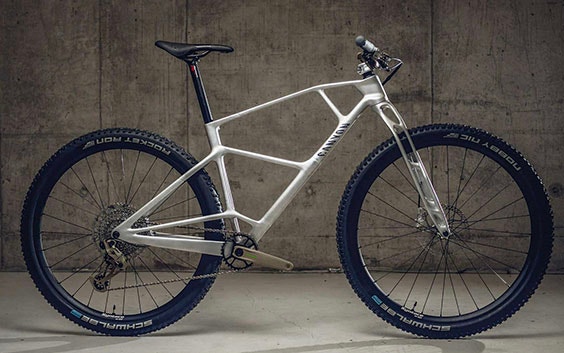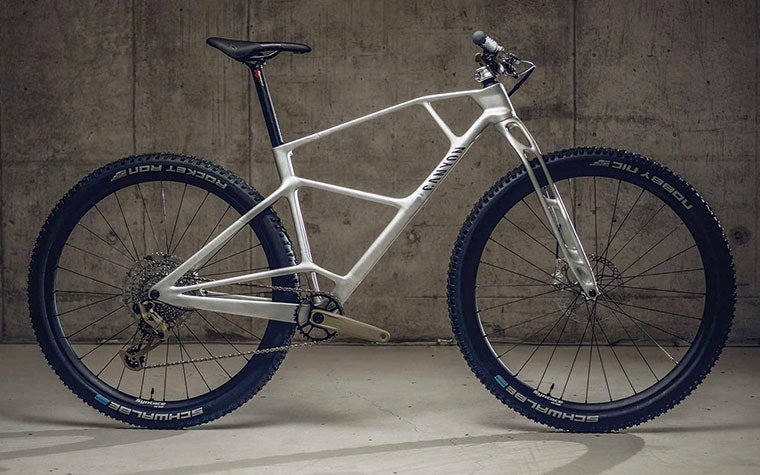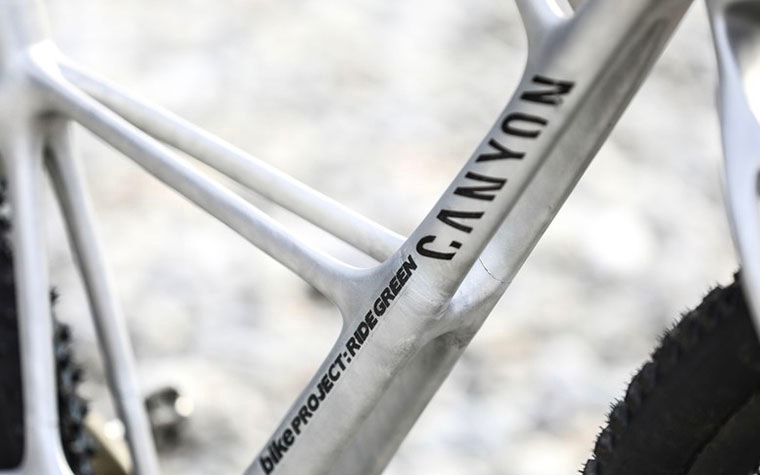CUSTOMER STORY
Canyon’s 3D-Printed Concept Bike Pushes Sustainability Competition to the Limit

German bike manufacturer Canyon Bicycles GmbH created a lightweight and sustainable 3D-printed prototype for BIKE Magazin’s ‘Ride Green’ campaign. Canyon contacted Materialise to produce the parts and used 3D printing (3DP) to achieve the frame’s unique shape. The mountain bike’s technical and environmentally-friendly qualities propelled it ahead of the pack in the cycling industry, as the bike was nominated for the 3D Pioneers Challenge (3DPC) 2022 Award.
The goal of the Ride Green project was to design a sustainable bike with fully recyclable components. Additionally, competing designs had to utilize reusable materials without affecting the overall part production and ensure waste was kept to a minimum. Canyon enlisted us to create the concept prototype, which used sustainable materials and a geometrically optimized, customizable design.


3DP keeps you ahead of the peloton
The circular bicycle frame (C2C) — specifically the body and fork — was created using selective laser melting (SLM). This technology is ideal for manufacturing complex parts more efficiently, combining the mechanical properties of metal with the flexibility and design freedom of 3D printing.
“The metal 3D-printed prototype represents the heart of our attempt to build a sustainable bike. The innovative manufacturing process allows for a completely new design language. Materialise was the perfect partner to build this futuristic prototype,” says Johannes Thumm, Developer at Canyon.
We fabricated the body and forks using recycled aluminum powder to meet the campaign’s sustainability requirements. Combining these two elements — additive manufacturing (AM) and reusable powder — improved the bike’s environmental impact, reduced the weight, and offered better performance.
“Our decades of experience with metal 3D printing and our Metal Competence Center in Bremen allow us to optimize printing processes, improve energy efficiency, and consistently recover and reuse metal powder. Recycled aluminum powder, unsintered from previous builds, enables us to create more innovative and sustainable products,” says Frank Kuechelmann, Marketing Manager at Materialise.


The frame consists of a skeletal structure and an outer shell for additional protection and aesthetic charm. Materialise Manufacturing 3D printed the frame in three pieces; each piece took only six hours to print. The frame’s total weight (including the forks) equals around 2 kg.
Canyon’s unique C2C bike frame receives praise from designers in 3DP industry
The bike’s sustainable aspect and 3DP’s ability to produce innovative designs were the catalysts for Canyon being nominated for 3DPC’s top prize. AM is an excellent way to combine multiple components into a free-form, lightweight part — and produce structures with geometries that are only limited by the designer’s imagination.
Such design elements are challenging to replicate using conventional manufacturing techniques and show the appeal of 3DP, especially for bike manufacturers, as an increasing number have realized the potential benefits of AM in the last few years.
The concept’s success has led Canyon to analyze how other models in the future may benefit from metal 3D printing.
Share on:
You might also like
Never miss a story like this. Get curated content delivered straight to your inbox.
